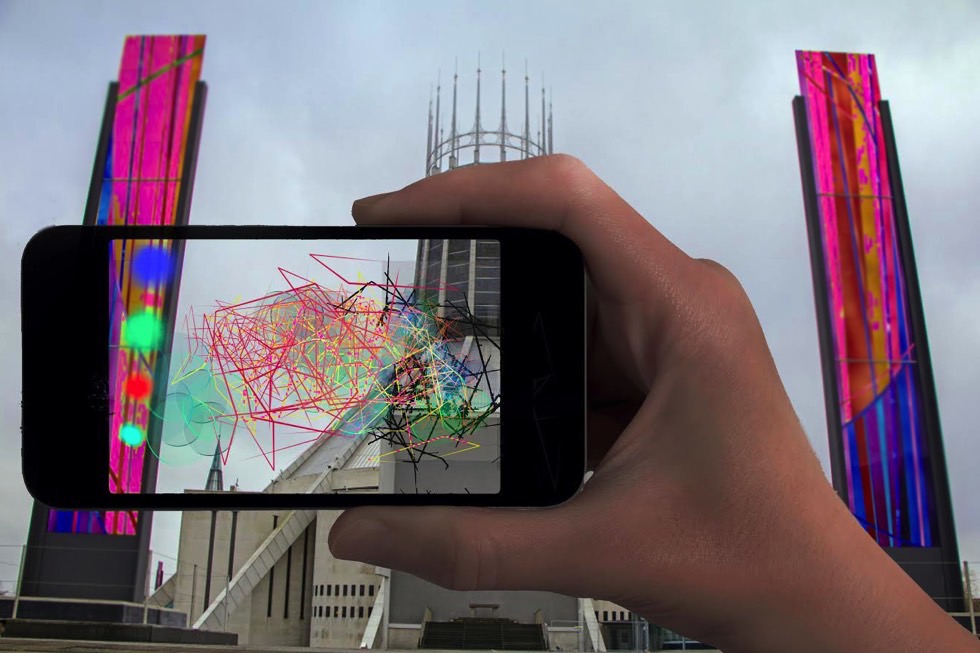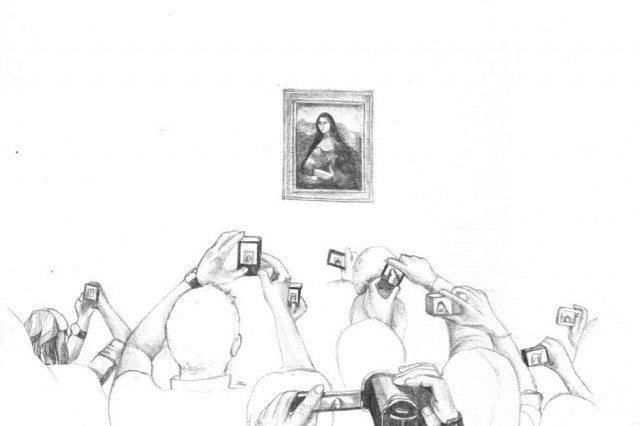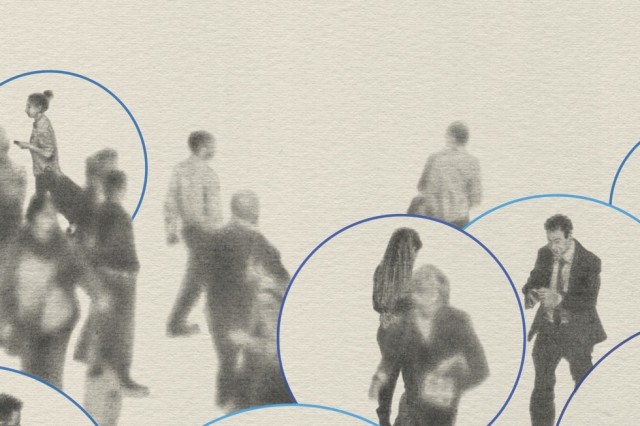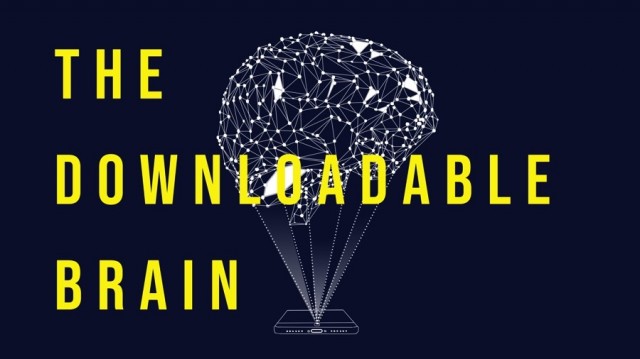“Technology will have its own desires.” The Big Interview: Gabriella Warren-Smith, Cognitive Sensations

Having set up Cognitive Sensations in 2018 to research the links between art, science and digital culture, the company’s founder and director Gabriella Warren-Smith has grown with it: from newbie graduate into a writer, curator and cultural producer. Laura Robertson sat down to talk to her about her latest programme, The Downloadable Brain, which investigates a (very real) future of mind-reading tech and sentient machines…
LR: Cognitive Sensations is now a really impressive platform that publishes essays by some of the world’s leading scientists, curators and artists, and you organise events, commission artworks (online and offline) and curate exhibitions. But let’s go back to the beginning. What motivated you to start the platform in the first place?
GWS: It was actually my dissertation for my Master’s in Art History and Curating [at Liverpool Hope University]. I was really interested in the impact of the museum and exhibition environment on the visitor’s experience. Originally, I studied architecture, and that’s always been the backstory of how I think – like how a building can impact the people inside it. When I was coming up with ideas for my dissertation, I worked at the Bluecoat Gallery and spent a lonnnng time watching visitors as an invigilator. I was really captured by the impact of people’s phones on their exhibition experience. Suddenly, it was like a jump from architecture, from physical space to the virtual world, a new physical presence within the gallery.
LR: Phones have an architecture, too, don’t they – they create an inner world and a bubble around us.
GWS: The invisible network. [laughs] That’s kind of what got me going. It was really fascinating to see how many times people touched their phones; if they were actually looking at art, or if maybe they were just looking through their viewfinders. So originally I was thinking about this from a curator’s perspective, but then that led me to explore further how phones, the Internet and digital devices impact the brain.
I started with a book by Nicholas Carr, called The Shallows: What The Internet Is Doing To Our Brains; he does a really good job of threading together a lot of research around the brain and psychology and the rise of the Internet. It was a great way into this huge, sparse, world of research. About a year later, I got my dissertation back, went to a cafe, and I just read it again. And that’s when I started to draft an exhibition proposal for what is now Cognitive Sensations – exploring the neurological impacts of technology. It’s just sort of been this ever changing, evolving thing.
LR: What drove you to keep pushing and to self-initiate a project? Lots of people would have stopped at the dissertation, never mind developing it into an ambitious community interest company (CIC), as you’ve done.
GWS: I think with the initiation, it’s more down to one thing: I wanted a rich experience. And as we all know, the art world is really difficult to get into. I’d spent maybe three years volunteering.
LR: In the arts, specifically?
GWS: Yes, in the arts, and a little bit of paid work at the Bluecoat and Biennial. But really, at that entry level, it just felt like quite a shallow experience. Deep down, I’m really a project manager, and I love to organise things and get stuck in. During my MA, we had to create an exhibition proposal, which I ended up turning into a real exhibition called The Dinner Party at Williamson Art Gallery, all about Liverpool’s 1960s art scene. That’s a pretty mad undertaking for two students who have no experience. [laughs] It was amazing. I learned so much. It still didn’t pay me anything, but then neither did sitting in galleries invigilating.
I found that the only way that I can have more of a say in the projects that I’m working in is to run them myself. Cognitive Sensations was all about – particularly at the beginning – everyday technology, things that affect everyone on a day-to-day basis. That felt like a really good premise for a project because there’s always new material and always something to talk about. Parents are really great audiences because they ask, what are my children doing? Is it dangerous, how much they’re using phones? It’s very easy to have very critical conversations.

LR: One of the most shocking, critical essays on Cognitive Sensations is from neurologist Richard Cytowic on ‘still face’: how using smart devices in front of children makes a parent emotionally, psychologically unavailable. That’s a perfect example of how the project is digging under the surface layers of what we understand tech is doing to us physically, mentally, socially.
GWS: It is a really contentious debate. There will be some neuroscientists who just spit at the idea, who would just say point blank that technology doesn’t change the brain, as we’ve got the same brains structurally as we did millions of years ago. But when you look at the Stone Age brain and at how attention once functioned as a basic instinct, and how certain social behaviours emerge through different developmental periods, you can start to build a different picture that isn’t about the structure of the brain, but about cognition. In this way, research within psychology is more helpful in explaining how technology impacts or plays upon our natural instincts. So, for teenagers, who are shaping their identity at a stage where they are really influenced by their peers, we can start to see how the whole Instagram/self-image culture has impacted them, sometimes really negatively.
LR: I didn’t realise how my still face was affecting people around me… People are looking for visual signals in your face for reassurance and attention. Using your phone, you have this static expression that gives nothing. It’s like a form of rejection as I read it. Richard articulates it in such a clear way that I could recognise it in my own behaviour.
GWS: I think you’ve really hit the nail on the head. In terms of you recognising your own behaviour, that’s one of my favourite bits of neuroscience and why I think it’s really approachable as a science. It’s relatable, because you can say, oh yeah, I’ve recognised that in something I’ve done. One of my key ‘ins’ to neuroscience is ‘neuroplasticity’: the brain’s ability, or its strength, to adapt physically. The brain is reshaped by our experiences. As a baby, your brain is incredibly plastic. As a teenager, it’s still really plastic and everything, from your environment to your relationship with your parents, all affects how your neurons make connections.
A lot of researchers talk about the regulation of how we use technology in early life; it creates certain connections within the brain, which leads to a child wanting technology more, because they snap into these rigid behaviours. It’s not just about how early you’re using technology, it’s also about the quality. Technology isn’t bad for children, it can be incredibly informative and a valuable parental tool.
But if it’s not regulated and it becomes a go-to-gadget that is unsupervised or constant, then you’re beginning to build an unhealthy relationship between your child and a device. Interestingly, neuroplasticity used to be seen as something that just happened when you were a child, but actually it happens throughout your whole life. We’re still learning things, and we’re still impacted by our environment. One of the big arguments in the great digital debate is that technology does literally rewire the brain.
LR: You can teach an old dog new tricks [laughs]. Does that mean we can change?
GWS: Absolutely. Then at the same time, why would we change? Because technology is so important for everything we do? Sometimes these arguments seem a little fruitless. Okay, technology is affecting our brains, but does it really matter? We cope very well with it. It’s all about taking responsibility for our relationship with technology. And, I guess, going further than the science and thinking about who wants us to be using our devices – the businesses and tech giants behind it all.
LR: It absolutely depends on who you’re talking to, doesn’t it? Device and Internet poverty is something we’ve all been made keenly aware of during Lockdown. Also thinking about ethics – most people are aware of what they’re agreeing to when they use a company like Amazon.
GWS: Yeah. I guess our awareness is pretty good, now, in terms of how our data is being used, or what we’re signing up for. But kids don’t really have that kind of awareness. I read something about the terms and conditions on Apple’s iTunes being the length of Shakespeare’s Macbeth. No one’s ever going to read them all. The information that we need to know is very inaccessible for certain people, unless they’re really, really looking. But I mean, I wouldn’t read those terms and conditions either.
LR: So what’s the outcome of this in your opinion? What kind of brave new world is this leading us towards?
GWS: There will be tech giants taking responsibility for the impact that they have on people. And that’s already happening. Google has digital wellbeing very much built into their culture, but you have to know about it to know the tips and the tricks. In terms of the distracted mind, and thinking about how notifications stimulate us… I’m going to go down a rabbit hole here…

LR: Go for it.
GWS: Go back to our Stone Age brains. We’re in the wilderness and we’re hunting for our food and there are predators: our attention, neurologically, is wired so that we can spot danger. And this is why we’re drawn to things like flashing images and little bleeping signals. There’s a really interesting book called The Distracted Mind, Ancient Brains In A High Tech World, by two neuroscientists, Adam Gazzaley and Larry Rosen, which is so good for understanding this. iPhones have got a special feature, where if you press the select button three times, your phone goes into black and white, trying to minimise our tendency to be distracted by these flashy colours.
LR: Isn’t that like putting a plaster on a broken leg?
GWS: [laughs] I guess so. It’s very easy to train your brain out of certain behaviours, just as it’s easy to train your brain into certain behaviours. But I know what you mean, it’s not going to have a very long impact.
LR: I’ve only really relatively recently conducted a bit of a health check on how I work. It’s not just about the ergonomic chair anymore. It’s how our focus is built around the devices that we use. We’ve only scratched the surface and, as you say, unless you’re interested, you’re not going to protect yourself. Hello to bad sleep and stress, or feelings of inadequacy. How do you think we can take a step back and start looking more critically at the technology that we use?
GWS: It’s very personal to the individual. We all have different habits. One thing I used to do was look at my phone quite pointlessly. Particularly if you’re in a long work day, sometimes you want to be distracted. We touch our phones something like every 12 minutes, one of those rigid behaviours ingrained into us, just a quick touch and check-in. I started my digital training by setting myself an hour and a half, two hours, where I put my phone in another room or have it face down. And I wouldn’t be allowed to go on it until that time was over. I think it’s more about setting yourself your own little goals. And it’s all about your own self-training.
LR: What commercial responsibilities could help address bad digital habits?
GWS: Where even to begin?! Again – because of the broad, intricate and diverse landscape of technology, it’s not like there’s one organisation or tech giant that can have an impact on society worldwide. Really, it’s down to governmental digital policies which are essential in buying user protection from the darker side. For example, only a year or so ago Google had to change their regs on YouTube to stop content marketed at children from displaying ads. This was because their previous model was breaking the US law known as the Children’s Online Privacy Protection Act.
I’m not saying tech companies aren’t responsible, they absolutely are. I just know when it comes to digital habits, we have to be more forward thinking as users and question the need to share certain information about ourselves, and what it means to receive a notification for every application we use. Technology plays on human weaknesses, but it’s not to say the relationship has to be this way. We need tech. It’s not going anywhere. It’s up to us how we use it.
LR: Where would you point first-time visitors to Cognitive Sensations?
GWS: That’s a good question. One of my favourite recent articles, Fighting Loneliness And The Digitally Divided, is touching on something you mentioned, which is the digital divide, and thinking about what happens if you don’t have access to technology. During the Pandemic, it became very apparent what kind of disposition certain people were being put in – who can’t connect with anyone outside the house, for kids who can’t go to school because they don’t have Internet.
Some of the artworks I’ve commissioned for the website also offer really thoughtful ways of thinking about our relationship with technology. C(02)loud by Henry Driver draws attention to the environmental impact of screen consumption. Andriana Obrocean’s love 2x2x is a playful comment on the love of a smartphone.
Cognitive Conversations: The Artist’s Perspective is also a great article which sums up a lot of the neurological-focussed artworks that emerged at the beginning of the programme.

LR: Tell us about your new programme of art, talks and essays, The Downloadable Brain, on sentient machines and the rise of AI.
GWS: Instead of looking at our present relationship with technology, it’s looking into a future which could be a lot more biologically connected. The Downloadable Brain’s quite an ambiguous term – I’ve tried to define it through three different goals that scientists and technologists are currently working towards: 1) To build a machine that can think for itself. 2) To create a technological copy of a human. 3) To read a person’s thoughts through their brain data. On building machines that can think for themselves – we’re talking about the rise of artificial intelligence, and cohabitation with robots. Technology will have its own wants, needs, desires. And I mean, that’s been a technological goal forever, you can find it in ancient stories.
LR: Like the Golem, right?
GWS: Yes, exactly. Like the Golem!
LR: Weird that we’re still ambitious for that, despite the fear and potentially disastrous outcome.
GWS: The AI scientist Hugo de Garis thinks that it’s going to provoke the biggest war since World War II, where it’ll be divided between – he’s got really cool names for this –
LR: All I’m thinking is: Terminator.
GWS: [laughs] It’s all sci-fi fantasy. The Downloadable Brain is everything you’ve seen in a film, but we’re talking about reality. De Garis describes Terrans, the people on Earth who don’t want technology to take over, who will be fighting against these crazy machines. If AI rose and did indeed see humans as insignificant and want to wipe us out, the Cosmists believe the only way to survive is to become technology itself. Whether or not I think that will actually happen, I’m not sure. But it’s a good narrative.
LR: It’s so rich in terms of popular culture and fiction.
GWS: Definitely. The technological goal Cognitive Sensations is looking at over the next month is about reading someone’s thoughts through their brain data. This is more about BCI technology, ‘brain computer interface’; either having a little chip inserted, or being wired up to a machine. Through picking up your electrical signals, this technology is going to become so advanced that it will directly read your thoughts. It’s so fascinating, because it was first designed around the 1990s for medical purposes, to enhance hearing or different sensory abilities.
But now it’s starting to make an appearance in the commercial world – Elon Musk’s famous Neuralink is exactly this, a chip in the brain. Facebook are even funding some BCI innovations – they want BCIs to work with social media so that you don’t have to write your posts. Instead, the BCI will pick up on what you want to communicate through your brain signals. Now we’re crossing privacy barriers. You and I have been talking about what we can do as humans to control our own privacy, but BCI tech throws everything massively out of proportion. If we are actually connected to machines biologically, then what does this mean? Who owns that data? Are we vulnerable to hacking?
As told to Laura Robertson
Watch Cognitive Sensations’ The Downloadable Brain now: a new programme of online artwork, essays and talks, including:
- Artificial Evolution: Sarah Selby’s living digital creature that feeds on the participation of its visitors (now live)
- Beyond Biology: Robots, Telepathy and Artificial Brains — a symposium co-hosted by Henry Shelvin from the Leverhulme Centre for the Future of Intelligence, with artists and researchers Anna Dumitriu, Dr. Marcello Ienca, Abou Farman (16 June)
- Decoding Humans: unveiling new artworks, research and technological approaches to tracking and quantifying emotion (30 June)
Image credits: all illustrations courtesy Cognitive Sensations. Top: The New Herulians (2019) Collaborative synaesthetic artwork by Marcos Lutyens, story written by Gabriella Warren-Smith, commissioned by Cognitive Sensations. Bottom: The Downloadable Brain (2020): curatorial programme by Cognitive Sensations





